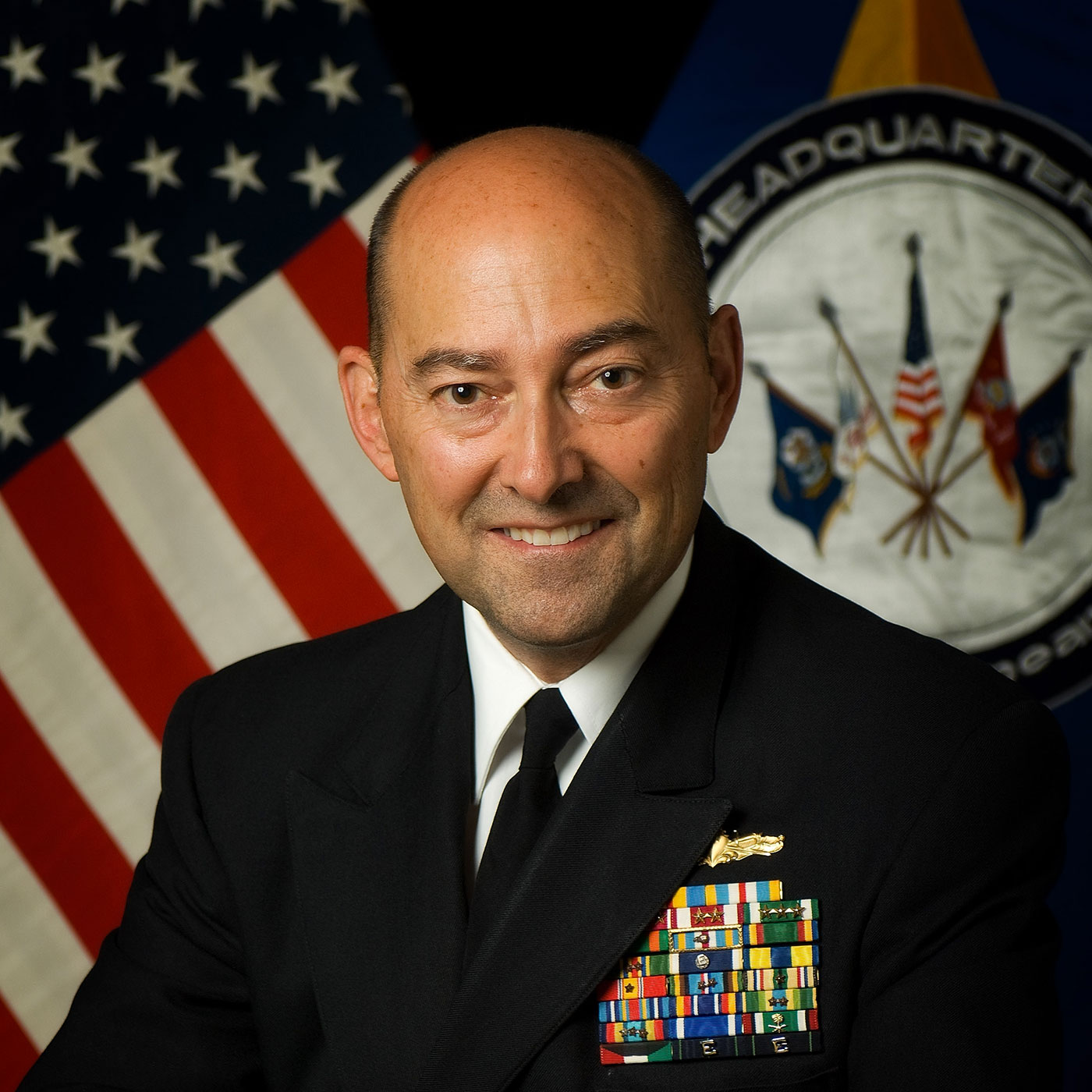
Over the past couple of weeks, America's Ukrainian partners have been riding a roller-coaster of President Donald Trump's making. The low point was the disastrous blow-up in the
In recent days, after
The problem is that, on issue after issue, Trump changes course on a whim. And given the Kremlin's apparent insistence that any ceasefire include a halt on
You may think the key resource for the Ukrainian military is hardware: artillery shells, tanks, armored personnel carriers, cruise missiles, air-defense missiles. And yes, those are all crucial. But what really put my heart in my throat was the stoppage of intelligence sharing.
Why is that flow so vital? How would stopping it again affect the Ukrainians' ability to hold off Russia's more powerful military?
When I was supreme allied commander of the
This was a major undertaking, and included strikes led by the
These are really three different but complementary intel resources for a military commander, especially one conducting air operations — as the Ukrainians are doing, despite being so outgunned in the skies over their own territory. They are crucial to not only prevailing in combat, but also to protecting the civilian population when a murderous opponent like Russian President
Let's start with the broadest category: information. In a combat context, this is the ability to tap into open-source data for military advantage. This has always been an important component of war, but with the rise of mass communications in the 20th century — and of course today's internet and social networks — it has never been more crucial.
An example in
Next and most obviously is the gathering of intelligence. This involves obtaining the answers to the "known unknowns" on the battlefield. How will the Russians divide their forces between the current offensives in Donbas and Kursk? How many air sorties will
Intelligence is a difficult and intricate mix of human reporting; data from overhead sensors like long-dwell drones; electronic signal collection (cell phones, UHF radio communications); cyber intrusions to collect the most sensitive information; hyperspectral analysis and a host of other tools. Intelligence is the superpower of the
When I commanded
And finally, there is imagery, generated by overhead sensors. If we know that big shipments of fuel are moving toward a key destination, we can direct the unblinking eye of our satellites to provide photographic images and video. In war, a picture isn't worth a thousand words — it is worth a million at least. Imagery provides the roadmap to reverse-engineer and destroy your enemy's campaign plan and logistics.
I'm heartened by the White House's decision to restart intelligence cooperation with the Ukrainians. It is hard to overstate how damaging cutting it off even for a few days has been, and Ukrainians have died as a result.
Let's hope the
(COMMENT, BELOW)
Stavridis is a Bloomberg columnist. He is a retired U.S. Navy admiral and former supreme allied commander of NATO, and dean emeritus of the Fletcher School of Law and Diplomacy at Tufts University. He is also an operating executive consultant at the Carlyle Group and chairs the board of counselors at McLarty Associates.
Previously:
• 02/14/25 Trump's 'Iron Dome' must succeed where Reagan's 'Star Wars' failed
• 09/13/24 Ignore Hamas' trendsetting warfare and risk the West
• 06/26/24 Here's how to stop the Houthi attacks at sea
• 05/15/24 Putin's next target may be the 'NATO lake'
• 04/09/24 Latest ISIS attacks show the war on jihad is heating up
• 02/21/24 Ukraine's military reset is doomed without more US aid
• 12/21/23 US-led Naval force might not end Houthi ship attacks
• 11/22/23 Send America's floating hospitals to Gaza
• 11/08/23 What the US should do about Iran
• 08/30/23 Haiti needs a new UN mission, this time led by the US
• 08/16/23 To stop Iran's threat to Gulf ships, send the Marines
• 07/28/23 NATO convoys can protect Ukraine's grain harvest from Putin
• 07/28/23 Sweden and Finland give NATO an Arctic opportunity
• 07/11/23 US military's recruiting woes are a national-security crisis
• 06/02/23 Ukraine war may become a proving ground for AI
• 05/16/23 Iran's tanker seizures may bring U.S. convoys back to the Gulf
• 05/08/23 Sudan rescue mission is helping the US Navy prepare for war
• 05/01/23 Ukraine is running out of ammo. So is the US
• 03/10/23 The US military must create a Cyber Force
• 12/07/23 Putin will carpet-bomb Ukraine unless the West acts
• 10/14/22 Putin's campaign of terror from the air is already failing
• 09/08/22 Iran reveals how its naval warfare is changing
• 08/02/22 US needs a global alliance against Russia's cyberattacks
• 06/28/22What to expect from NATO's new strategic concept
• 04/13/22 Nukes? Ukraine war's most potent weapon may be a cell phone
• 01/18/22 Russia is pushing Finland and Sweden toward NATO
• 10/20/21 What Colin Powell taught me about war and optimism
• 09/14/21 Why the U.S. Navy is hunting pirates off Africa
• 07/29/21 Cuba and how Biden can avoid another Mariel boatlift
• 07/01/21 Donald Rumsfeld never gave in
• 02/16/21 Keeping troops in Afghanistan makes America safer
• 08/19/20 Military reasons to celebrate the Israel-UAE deal
• 07/02/20 Taliban bounties would be a new low even for Putin
• 01/02/20 May the 'Space Force' be with you
• 08/02/19 What Iran will do next, and how to stop it
• 05/06/19 The 'Five Eyes' intelligence-sharing alliance should expand, starting with Israel and Japan
• 04/24/19 Sri Lanka attacks mark the birth of terrorism 3.0
• 01/14/19 Iran's tiny navy is trying to revive the Persian Empire
• 06/04/18 US was right to give China's navy the boot
• 06/04/18 Big winner of Colombia's election is the US
• 05/17/18 Great power politics is back as U.S. aims at Russia with resurrected Navy fleet
• 03/20/18 Fake advice for Putin's fake win


 Contact The Editor
Contact The Editor
 Articles By This Author
Articles By This Author